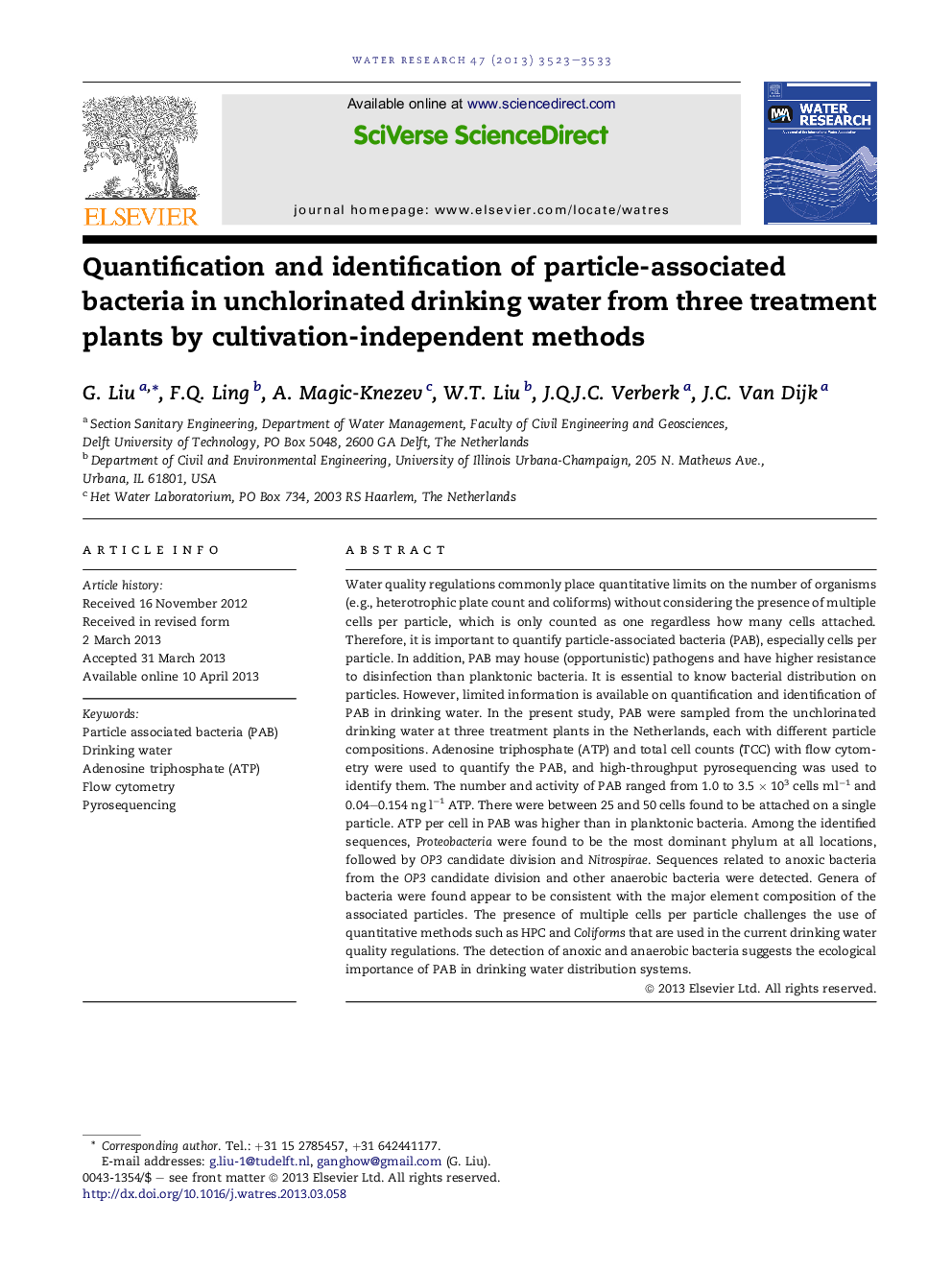| کد مقاله | کد نشریه | سال انتشار | مقاله انگلیسی | نسخه تمام متن |
|---|---|---|---|---|
| 4481816 | 1316834 | 2013 | 11 صفحه PDF | دانلود رایگان |

• The number and activity of PAB ranged from 1.0 to 3.5 × 103 cells/ml and 0.04–0.154 ng/l ATP.
• There were 25–50 cells found to be attached on a single particle.
• Anoxic and anaerobic bacteria were detected; OP3 was a main part of the PAB population.
• Bacterial genera associated with particles are consistent with the particle characteristics.
• PAB are important to bacteria enumeration and ecology of water distribution systems.
Water quality regulations commonly place quantitative limits on the number of organisms (e.g., heterotrophic plate count and coliforms) without considering the presence of multiple cells per particle, which is only counted as one regardless how many cells attached. Therefore, it is important to quantify particle-associated bacteria (PAB), especially cells per particle. In addition, PAB may house (opportunistic) pathogens and have higher resistance to disinfection than planktonic bacteria. It is essential to know bacterial distribution on particles. However, limited information is available on quantification and identification of PAB in drinking water. In the present study, PAB were sampled from the unchlorinated drinking water at three treatment plants in the Netherlands, each with different particle compositions. Adenosine triphosphate (ATP) and total cell counts (TCC) with flow cytometry were used to quantify the PAB, and high-throughput pyrosequencing was used to identify them. The number and activity of PAB ranged from 1.0 to 3.5 × 103 cells ml−1 and 0.04–0.154 ng l−1 ATP. There were between 25 and 50 cells found to be attached on a single particle. ATP per cell in PAB was higher than in planktonic bacteria. Among the identified sequences, Proteobacteria were found to be the most dominant phylum at all locations, followed by OP3 candidate division and Nitrospirae. Sequences related to anoxic bacteria from the OP3 candidate division and other anaerobic bacteria were detected. Genera of bacteria were found appear to be consistent with the major element composition of the associated particles. The presence of multiple cells per particle challenges the use of quantitative methods such as HPC and Coliforms that are used in the current drinking water quality regulations. The detection of anoxic and anaerobic bacteria suggests the ecological importance of PAB in drinking water distribution systems.
Figure optionsDownload high-quality image (134 K)Download as PowerPoint slide
Journal: Water Research - Volume 47, Issue 10, 15 June 2013, Pages 3523–3533